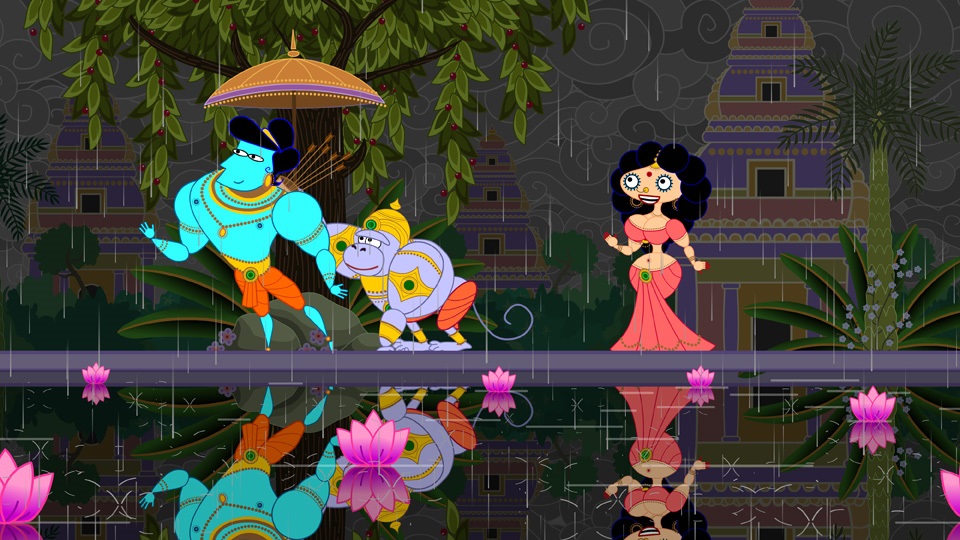
“I am enchanted. I am swept away. I am smiling from one end of the film to the other.”
This was film critic Roger Ebert’s reaction to Nina Paley’s Sita Sings the Blues (2008), an animated film that follows two parallel stories. The first is the ancient tale of Sita, the heroine of the Hindu mythological story of the Ramayana, and the second is the modern biographical tale of Nina, the filmmaker herself.
Originally a short that Paley expanded almost single-handedly into a feature film, Sita Sings the Blues incorporates multiple styles of animation: from the 18th-century tradition of Rajput painting and traditional Indian shadow puppets to modern vector graphic animation and lo-fi “squigglevision.” Each aspect comes together to unfold Paley’s retelling of the Ramayana in a form sympathetic to Sita, alongside the exploration of events from Paley’s own life. Paley’s take on the Ramayana was not uncontroversial; her shifting of the focus from Prince Rama to Sita drew strong reactions upon release. But ultimately, the film’s brightness, humor, color, and exuberance make it the perfect event to celebrate Diwali, the Hindu festival celebrating the victory of light, goodness, knowledge, and hope over darkness, evil, ignorance, and despair—aspirations that feel more pressing than ever at this particular moment.
A screening of Sita Sings the Blues will take place at the Harvard Art Museums in Menschel Hall, Lower Level on Oct. 20. Please enter the museums via the entrance on Broadway. Showtime is 2 PM. Free admission


